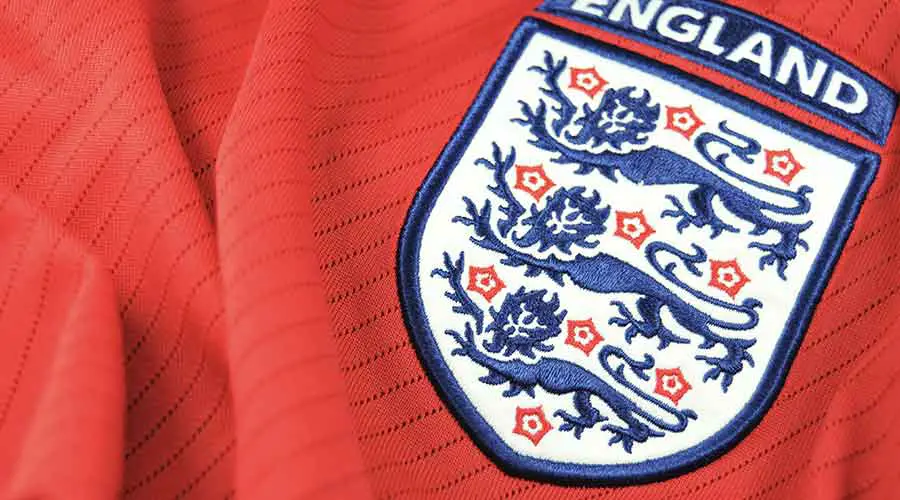Why Are England Called ‘Three Lions’?
Unraveling the History Behind England’s Fierce Nickname
If you’ve ever watched the England national football team play, you might have noticed something peculiar about their emblem – a trio of golden lions that seem to leap off their shirts. The “Three Lions” nickname has become as much a part of the team’s identity as the passionate fans, the brass band that plays at every match, and, unfortunately, the inevitable tournament disappointments.
So, why is England called “The Three Lions,” and where does this ferocious nickname come from? Let’s dive into the rich history behind this emblem.
Origins of the Three Lions: A Royal Affair
The roots of the “Three Lions” emblem date back to the early 12th century and the age of heraldry. Henry I, known as “the lion of England,” became the King of England in 1100 and adopted a single golden lion on a red field as his royal arms. The number of lions increased as Henry I celebrated marriages, first with Matilda of Scotland, and later with Adeliza of Louvain, whose father also had a lion on his shield. This union inspired Henry I to add a second lion to his standard.
When Henry II married Eleanor of Aquitaine in 1154, her family crest, which featured another lion, completed the trio. The emblem of three golden lions on a scarlet background was subsequently used by Richard the Lionheart, Henry II’s son and successor, as a symbol of the English throne. This majestic emblem has graced the Royal Arms of every monarch since.

The Football Connection: Three Lions on the Pitch
When the Football Association (FA) was formed in 1863, it made perfect sense to use the royal shield as the basis for its logo. While the FA’s original logo featured three lions, it’s important to note that it has been slightly modified twice. The first time was in 1949 when the crown on top of the lions was removed to differentiate it from the England cricket team’s badge, and the second time was in 2013 when the crest temporarily turned gold to commemorate the FA’s 150th anniversary.
The FA’s headquarters are located in Lancaster Gate.
Another iconic symbol on the England football team’s badge is the ten Tudor roses, which represent Henry VII’s unification of the houses of Lancaster and York following the Wars of the Roses.
A Brief History of the England National Team
The Three Lions played their first international match against their northern neighbors Scotland in 1872. Since then, they have participated in numerous international tournaments, with their most notable achievement being the 1966 FIFA World Cup victory, led by captain Bobby Moore. England’s journey in the world of football has been filled with ups and downs, but their iconic “Three Lions” emblem has always been a source of pride and unity for players and fans alike.
A Legacy Beyond Borders: The Three Lions Influence
England was not the first to use lions in their royal crests. They were preceded by Danish Vikings, Saxons, Normans, and even Gauls and Northern Italians in the 6th and 7th centuries. It has been used as a battle standard in England and overseas conflicts and has come to represent strength, courage, and resilience.
A Symbol Embraced by Pop Culture
The “Three Lions” nickname transcends football, as it has been adopted by English pop culture. In 1996, comedians David Baddiel and Frank Skinner, along with the band The Lightning Seeds, released a song titled “Three Lions.” The catchy tune quickly became England’s unofficial football anthem, capturing the nation’s love for the game and their unwavering support for the national team. The song’s memorable chorus, “It’s coming home, it’s coming home, football’s coming home,” is still chanted by fans at matches and has become synonymous with England’s football spirit.
The Three Lions in Modern Football: A Rallying Cry
In recent years, the “Three Lions” emblem has become a rallying cry for England’s national team during international tournaments. As players wear the iconic symbol on their shirts, they are reminded of the rich history and tradition they represent. Fans, too, feel a deep connection with the emblem, as it unites them with their team and their fellow supporters. The “Three Lions” nickname has evolved into a symbol of hope, resilience, and the unwavering belief that one day, England will once again taste football glory.
Conclusion: The Power of Three Lions
The story of the “Three Lions” emblem is a tale that spans centuries, encompassing royalty, heraldry, and the world’s most popular sport. It’s a symbol that has united England’s football team and fans and has come to represent the spirit and passion of the nation.
